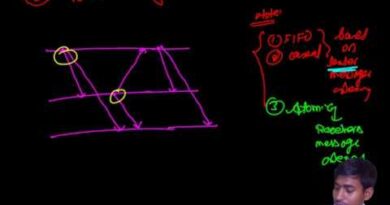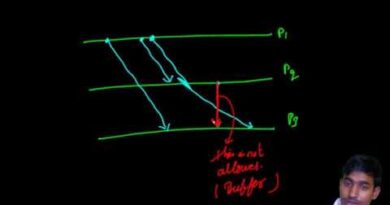Characteristics of Multimedia System-What is multimedia system-multimedia design
Characteristics of Multimedia System-What is multimedia system-multimedia design.
Contents
- 0.1 Characteristics of Multimedia System, Multimedia System, and Multimedia Design
- 0.2 1. What is a Multimedia System?
- 0.3 Examples of Multimedia Systems:
- 0.4 2. Characteristics of Multimedia Systems
- 0.5 3. What is Multimedia Design?
- 0.6 Key Principles of Multimedia Design
- 1 🎥 What is a Multimedia System?
- 2 🧩 Characteristics of a Multimedia System
- 3 🖌️ What is Multimedia Design?
- 4 📘 Summary Table
Characteristics of Multimedia System, Multimedia System, and Multimedia Design
1. What is a Multimedia System?
A multimedia system is a system that integrates different forms of media (text, images, audio, video, animation, and interactive content) to enhance communication, learning, and entertainment. These systems are widely used in education, business, entertainment, and digital marketing.
Examples of Multimedia Systems:
- Educational software (e-learning platforms, virtual labs)
- Gaming applications (video games, virtual reality)
- Streaming services (Netflix, YouTube)
- Business presentations (PowerPoint, Prezi)
2. Characteristics of Multimedia Systems
Integration of Multiple Media Types
- Combines text, images, video, audio, and animation for enhanced user experience.
Interactivity
- Users can interact with the content (e.g., clicking, navigating, or making choices in games).
Digital Representation of Media
- All content is stored and processed in digital format for easy manipulation and distribution.
Real-Time Processing
- Supports live streaming, gaming, and interactive applications.
High Storage Requirements
- Multimedia files (videos, images, and audio) require large amounts of storage.
Data Synchronization
- Audio, video, and text must be synchronized for smooth playback and user experience.
Multimedia Networking
- Supports online streaming, video conferencing, and social media interactions.
3. What is Multimedia Design?
Multimedia design refers to the process of creating and arranging visual, auditory, and interactive content to communicate a message effectively. It is widely used in:
Graphic Design – Creating visuals for marketing and branding.
Video Production – Editing and producing films, advertisements, and presentations.
Web & UI/UX Design – Designing websites and user interfaces.
Game Development – Creating immersive gaming experiences.
Key Principles of Multimedia Design
Balance – A visually appealing layout.
Contrast – Using colors and typography to highlight key elements.
Alignment – Ensuring elements are well-placed for readability.
Consistency – Keeping a uniform theme and design style.
User-Centric Approach – Designing content for easy navigation and engagement.
Would you like more details on multimedia applications or tools used in multimedia design?
Here’s a clear and complete explanation of the Multimedia System, its Characteristics, and Multimedia Design, suitable for academic, exam (like GATE or university-level), or presentation use.
🎥 What is a Multimedia System?
A Multimedia System is a computer-based system that uses a combination of multiple media types—text, audio, images, video, animation, and graphics—to present, store, transmit, and interact with information.
It allows users to create, communicate, and consume content in a more engaging, interactive, and meaningful way.
🧩 Characteristics of a Multimedia System
Here are the key characteristics that define multimedia systems:
1. Multiple Media Types
-
Involves two or more media such as text, graphics, audio, video, and animation.
-
Enhances communication and understanding.
2. Digital Integration
-
All media elements are digitally integrated and synchronized.
-
Makes editing, storage, and transmission easier.
3. Interactivity
-
Users can interact with the system via inputs like clicks, voice, gestures, etc.
-
Enables features like navigation, feedback, and user control.
4. Time-Based Media
-
Some elements (audio, video) are time-dependent and need synchronization.
-
The system must manage timing, sequencing, and playback control.
5. Hardware and Software Dependency
-
Needs high-performance hardware (CPU, GPU, RAM) and compatible software (media players, codecs, etc.).
-
Media files are large and resource-intensive.
6. Communication Support
-
Can be used for communication, education, entertainment, and information dissemination.
-
Often includes networking for streaming or sharing.
7. Real-Time Processing
-
Some multimedia systems (e.g., video conferencing) require real-time performance.
-
Low latency and quick response are critical.
🖌️ What is Multimedia Design?
Multimedia Design is the process of planning, designing, and creating multimedia content for digital applications like websites, apps, games, advertisements, and educational tools.
💡 Elements of Multimedia Design:
-
Visual Design
-
Layout, color theory, typography, graphics, and UI.
-
-
Audio Design
-
Background music, voice-overs, sound effects.
-
-
Animation & Video
-
Motion graphics, transitions, video editing.
-
-
Interaction Design
-
Buttons, controls, navigation, feedback systems.
-
-
Usability & Accessibility
-
Ensuring the design is intuitive, inclusive, and user-friendly.
-
🎯 Goal of Multimedia Design:
To deliver information effectively and attractively, combining aesthetics and functionality to engage the user.
📘 Summary Table
| Topic | Description |
|---|---|
| Multimedia System | A system that combines various media to present and process content |
| Characteristics | Multi-modal, interactive, time-based, digital, hardware/software intensive |
| Multimedia Design | The creative and technical process of crafting multimedia experiences |
Would you like:
-
A diagram or infographic to represent this?
-
A multiple-choice quiz for practice?
-
A short note version for quick revision?
Let me know!


